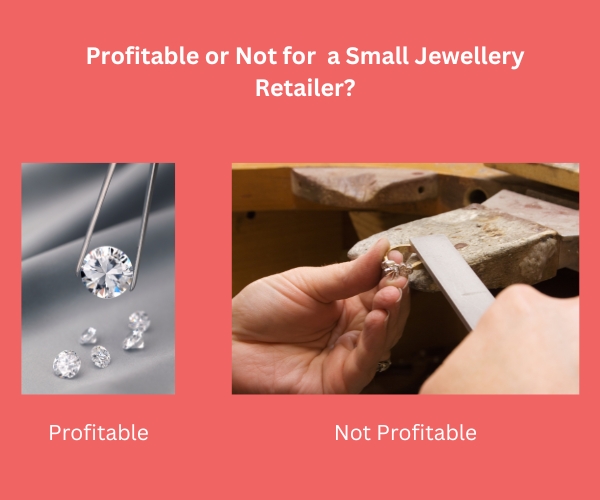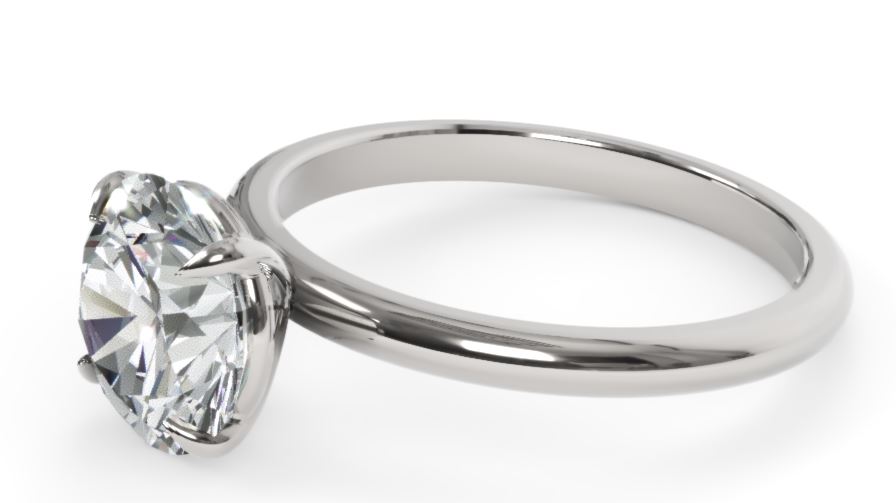Last month, I wrote that staunch natural diamond advocate, Martin Rapaport, held up the white flag and acknowledged that the lab grown diamond market has permanently damaged natural diamond demand. Whilst this admission wasn’t exactly shocking or groundbreaking news, many in the industry have not fully considered the full set of consequences of such a shift from natural diamonds to lab grown diamonds. One such consequence is the effect on small manufacturing jewellers, predominantly in high-wage countries such as Australia, New Zealand, Canada, US and UK. Whilst the business model of a small manufacturing jewellery workshop was clear cut five years ago, with the price of lab grown and natural diamonds sinking, the very viability of these workshops is now in doubt.
What’s The Problem?
Whilst larger jewellery workshops still exist in Western countries, the retail jewellery industry remains largely fragmented and is dominated by smaller players. These smaller shops tend to have in-house jewellery workshops, employing between one and ten bench jewellers, gemstone setters and/or engravers. These shops can be separated into two categories: those that do mostly repairs, and those that mostly manufacture jewellery. Whilst I don’t, and have never run a workshop that has done mostly repairs, from what I have been told by those in the repair business, they are, for the most part, quite lucrative businesses.
However, the second category – those shops that focus mostly on manufacturing jewellery, or “makes” as they are called in the industry are most at risk from the rise of lab grown diamonds. The reason for this is that if you separate the net profit generated from the diamonds and gemstones sold, from the net profit generated from the actual manufacture of the piece of jewellery, most of these small workshops would actually be making a loss, and would not be viable standalone operations. Most jewellery store owners know this, but are at a loss of what to do about it. Afterall, if a jewellery shop is profitable and the customers are happy, then a small workshop at the back of the shop isn’t really a problem.

Above: Gemstones may be profitable, but jewellery manufacturing certainly isn’t.
However, with the steep decline of lab grown diamond prices and decreased revenue and profit as a result, many of these small jewellery stores may find themselves unable to support a loss-making workshop. So, what exactly are the solutions to this problem, or are these small workshops doomed to fail?
Solution 1: Stop Selling Lab Grown Diamonds
Three years ago, a mere handful of retail jewellers sold lab grown diamonds. Today, virtually every jeweller is selling them – with some of them looking like they have been forced, kicking and screaming into selling them due to consumer demand. However, with prices cratering, combined with the increased competition, many retailers are pushing back toward natural diamonds, as Russell Kwiat explains to JCK:
“There was a push element to lab-grown from retailers,” he said. “They got into it for the very good margins, and some of them knew it was a short-term play. They’re now in a place where they do see some of their business is being cannibalized, and they do need to push back toward natural.”
Whilst ceasing to sell lab grown diamonds altogether isn’t a viable option for most retail jewellers at the moment, I definitely think that most retail jewellers, especially those with in-house workshops, need some sort of plan for when the lab grown music eventually stops – whether that means slowly phasing them out, or ceasing to promote, but not sell them.
Solution 2: Tariffs
With the US presidential election just days away, trade policy has been a much talked about issue, with Donald Trump floating the idea of replacing income tax with tariffs.
The main problem with tariffs is that they ultimately increase prices for consumers, whilst benefiting a small few inefficient manufacturers. In addition to this, they are easily circumvented by using a third country to finish the goods.

Above: Will Donald Trump introduce huuuge tariffs on lab grown diamonds?
In Australia, finished jewellery attracts a five percent duty, whilst loose gemstones attract no duty at all. Traditionally, with the value of natural diamonds, this has meant importing a finished diamond ring from overseas has been a costly affair, thus protecting, to some extent, local manufacturers. However, with the value of lab grown diamonds being in the hundreds, as opposed to thousands of dollars, a five percent tariff is inconsequential, not to mention, a sizeable portion of lab grown diamond jewellery is currently, or soon will be worth under $1,000, thus will not attract any duty or tax. Therefore, unless the government wants to introduce tariffs in the order of 100 percent for all jewellery, including costume jewellery, and substantially lower the duty and tax free threshold, moves that are guaranteed to be unpopular with the public, tariffs aren’t a viable solution.
Solution 3: Get New “Jewellers”
As I wrote about earlier this year, there is, and has been a “shortage” of skilled jewellers for many years now. This shortage, like many so-called “skills shortages” is really a money shortage – that is, if employers pay employees above market rates, the “skills shortage” magically disappears. However, with less money coming through the door due to lab grown diamonds, some jewellery workshops may struggle to attract and retain skilled jewellers.
Luckily, current design trends, combined with the fact that CAD/CAM has albeit replaced handmaking jewellery has meant that the need for highly skilled bench jewellers has been greatly diminished. A case in point is our newly introduced basics range of engagement rings. All of these are simple designs and cast in one piece and in one metal, and are a direct result of consumer demand, no doubt spurred on from the plethora of online retailers selling such rings. Whilst skilled jewellers will always be needed, it seems silly to have skilled jewellers clean up such rings as it is easy enough hire non-skilled jewellers, who are much cheaper, to clean up and polish such rings, along with numerous other simple jobs in the workshop.

Above: Does a one piece cast ring need a skilled jeweller to clean and polish?
Whilst not at crisis point, the small-scale jewellery manufacturing industry needs to address the issue of lab grown diamonds, and moreover, the rising popularity of cheaper gemstones such as moissanite. Whether or not there will be a thriving jewellery manufacturing industry in Australia in the future, or whether it will shrink to only service high end pieces remains to be seen.